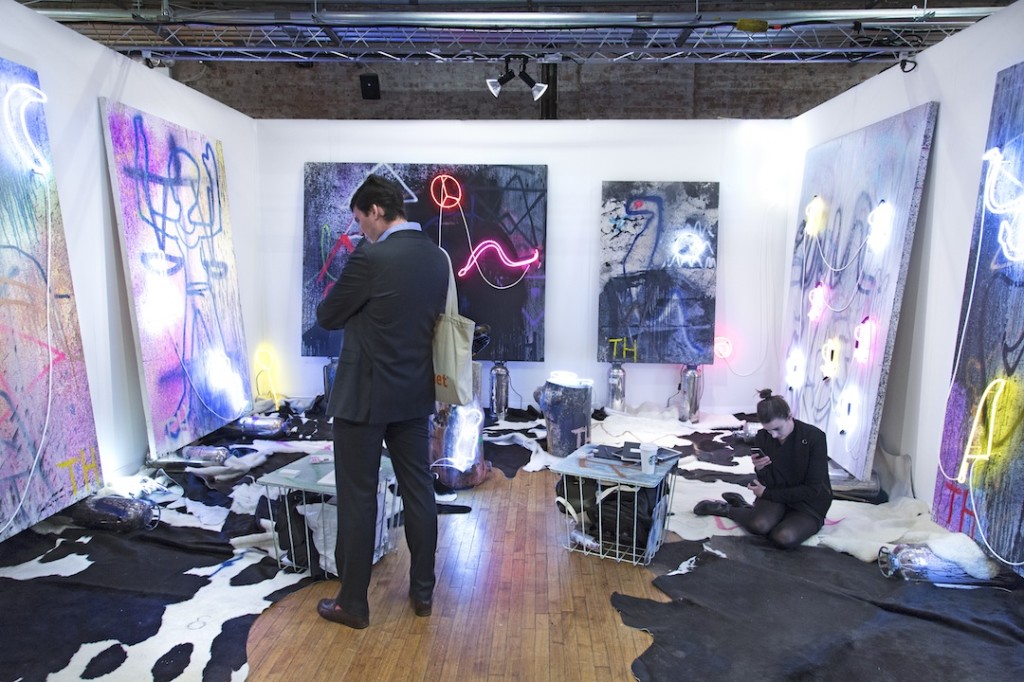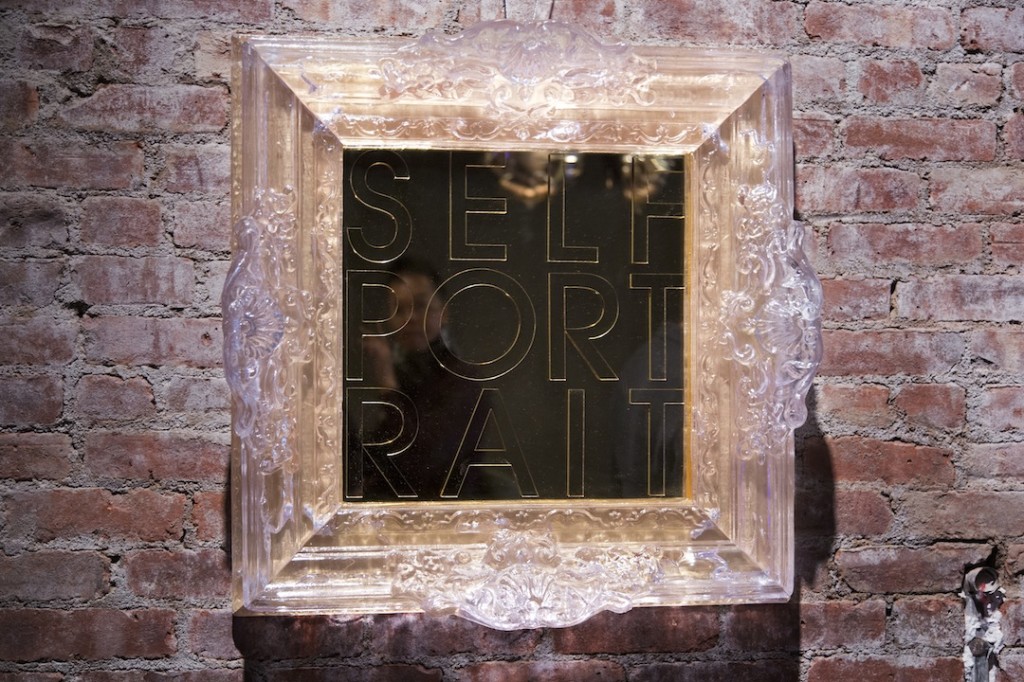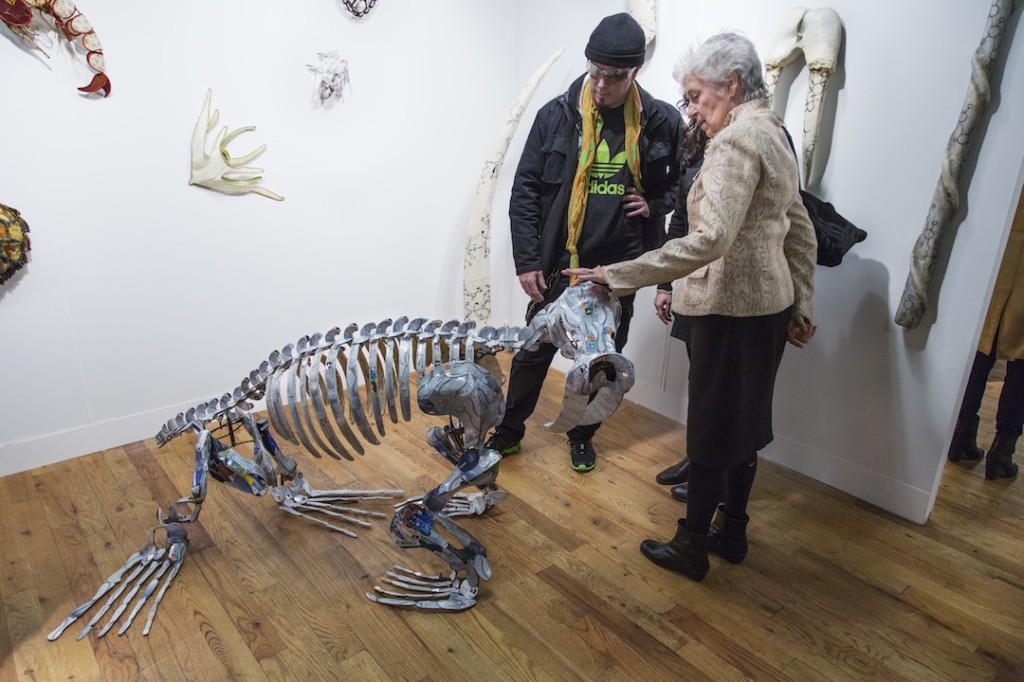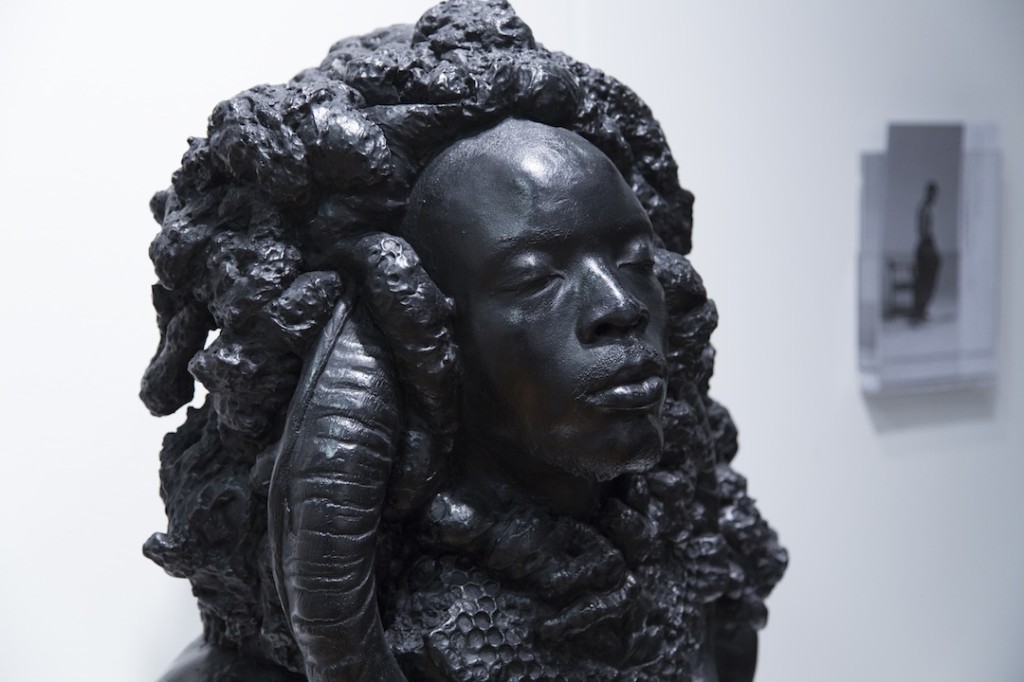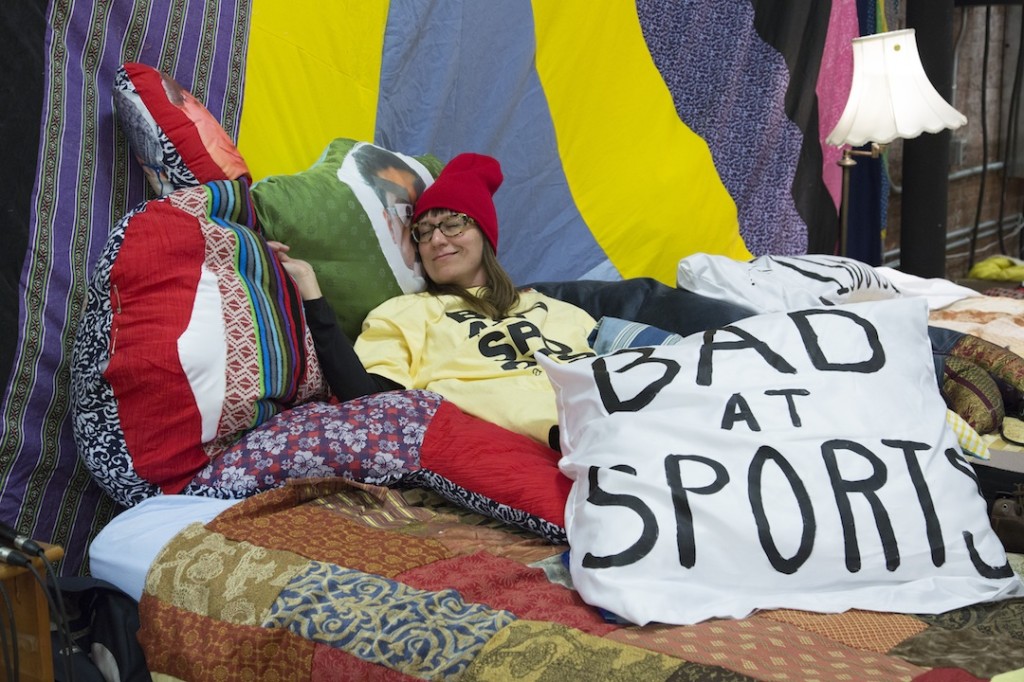Vast Terrain Art Fair
VOLTA NY is an art fair that showcases galleries that work with exciting emerging artists. The fair requires that each booth represent a solo artist project and provides a platform that often challenges the typical ideas of contemporary art.
Author | Annie Malamet
Photography by Taner Besen
My hunger for aesthetically beautiful work composed in various mediums was satiated this past Thursday at the Volta Art Fair in Soho, which ran from March 6th through the 9th. There were many compelling works at Volta, but there are a few artists in particular to watch out for.
The first works that struck me were London-based artist Amel Benny’s large canvas silkscreen/painting combinations. Sponsored by the Selma Feriani Gallery, Benny is currently doing a residency in New York, and it shows that the city has inspired her. Benny silkscreen-prints blurred photographs of what appear to be urban landscapes onto canvases. She then paints over them in grey, blue, silver, and cool yellow tones. Sometimes she only paints one thin line, other times she obscures the silkscreened photo completely, rendering the already abstracted image underneath unrecognizable. “I want to build up the paint to give the painting dimension,” Benny said. “I want it to almost look like a metal relief coming from the canvas.” I told Benny her work reminded me of Mark Rothko, but with a distinct feminine touch, and she felt that might be an accurate comparison.

A completely different kind of painter, Adam Mysock’s historical revisionist pieces definitely elicited some art-nerd squeals from me. Represented by the Jonathan Ferrera Gallery in New Orleans, Mysock literally repaints famous paintings, but with a unique touch: Caravaggio’s David holds not the head of Goliath, but a dismembered android; a portrait of Ponce de Leon sinks upside down into the ocean; Artemisia Gentileschi’s Judith and Holoferenes have their heads replaced with full moons. I’ve seen work like this online, where paintings are perfectly photoshopped to include sci-fi elements or other humorous references, but Mysock actually recreates these paintings by hand. Not to dismiss digital art, but somehow Mysock’s dedication to the concept, the act of meticulously remaking directly places the work within the larger tradition of art history. They become more than the punch line of a joke; they force us to think about how these images fit into the history of humans creating things, both art and technology.

Keeping in this vein of revisionist art history is Montreal-based painter Natalie Reis, represented by the Trois Points Gallery. Reis has created a dialogue with the history of floral still life painting and traditional vanitas imagery. In a Dutch Baroque painting, the artist would often paint a skull next to a bouquet of lush flowers to remind the viewer of our inevitable mortality. Reis has taken this tradition a step further, painting sprays of beautiful flowers that are actually venomous; they are striking, but they could kill us. Another theme in Reis’s work is the relationship of women to traditional painting. One piece at the artist’s booth was a large recreation of Ingres’ “Grande Odalisque”. The difference is there is no background, almost no color, and a lion head has replaced the harem girl’s face. Oh, and don’t forget the row of penises jutting out along her spine. Reis tells her viewers complex stories about the history of women in art, and I’m glad I’m in on the joke.
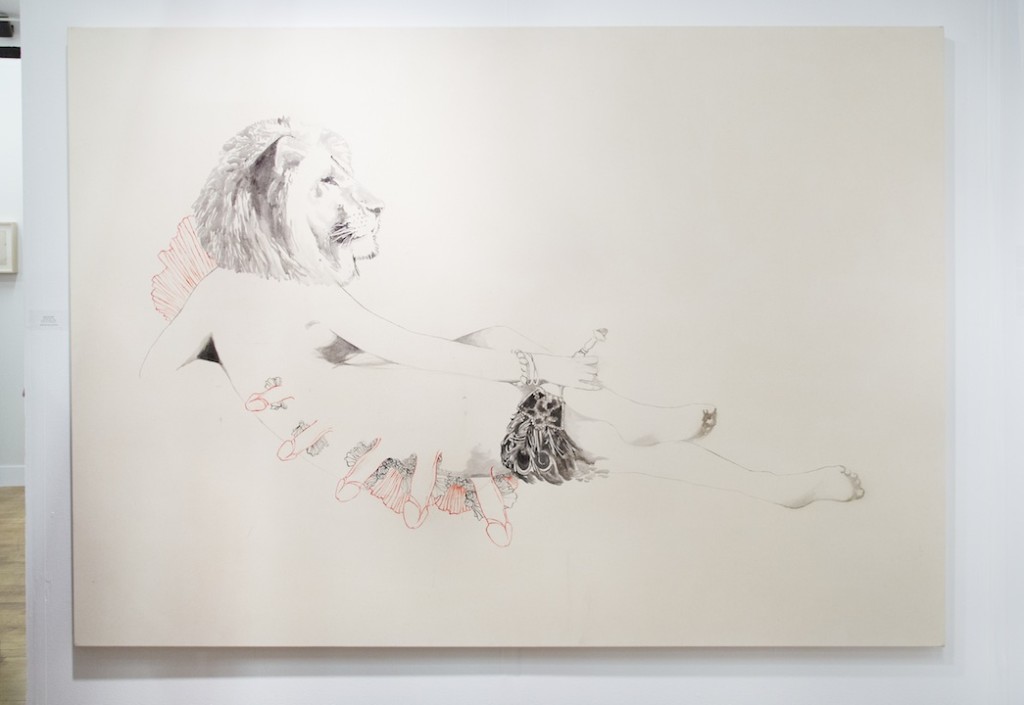
Another painter that caught my eye was Ryan Martin, represented by Mark Wolfe Contemporary in San Francisco. Small-scale portraits of stunning feminine men, all with similar features and slight variations, populated this booth. These portraits give off a Frida Kahlo vibe: the subject stares off into space or directly at the viewer, all while paying little attention to the various naturalistic elements that surround them. Insects and lizards crawl on their faces, vines engulf them and creep up their shirts, monkeys or birds perch on them, but their stoic expressions remain unchanged. In the center of these small works is a larger, gorgeously vibrant painting of Judy Garland as Dorothy. Photo-realistic and yet hyper-real, Judy’s doe-eyed gaze is directed into space while vibrant flowers in all colors of the rainbow surround her head. When viewed with Martin’s other portraits, a study of the queer male inner-fantasy emerges, one where the imagined representation is better than real life; it is perfect, pulsating, and paradigmatic.
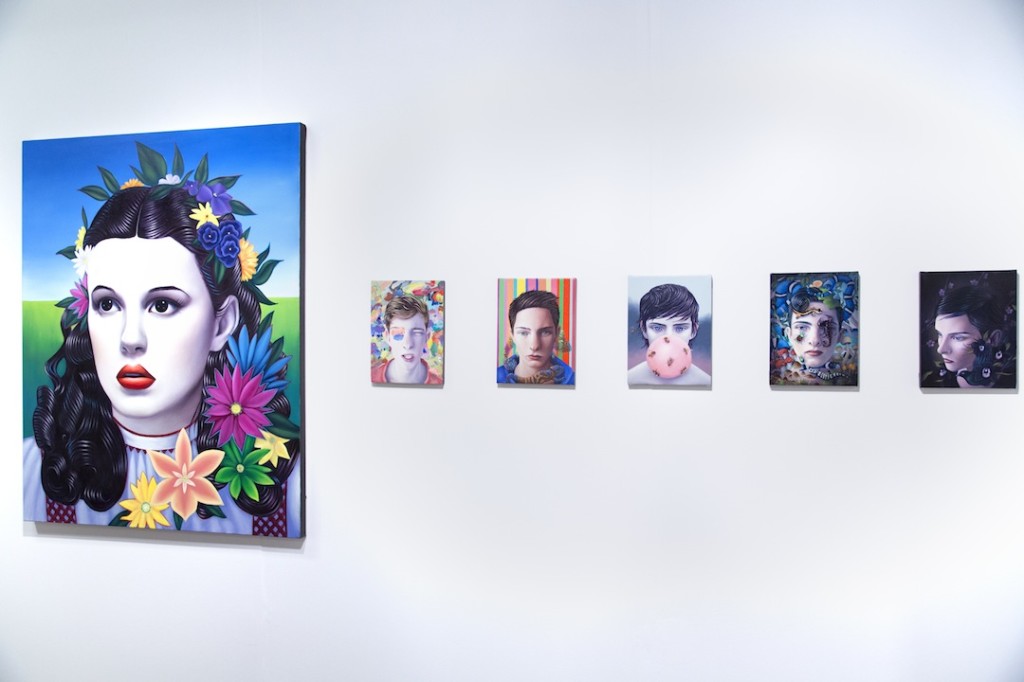
Fantastical natural forms were also seen in the work of a vastly different artist, Katja Loher of C24 Gallery in New York. Loher creates hand-blown glass structures to showcase her video pieces, which feature individuals performing choreographed movements in hyper-real naturalistic spaces. Each bubble houses a different video and adds to the surreal sensibility of the pieces. Loher works with themes related to environmentalism: in one video bees dance over a honeycomb, appearing and then reappearing in the frame to represent their rapid disappearance from the environment. I must have some ingrained bias, but I typically shy away from environmentalist art. However, Loher’s kept my attention, and that definitely says something about the ethereal, inviting quality of her pieces. Another piece featured hand-blown, fully functional carafes placed on rectangular structures housing circular videos. The functionality of this work along with the content creates a tension between human presence and our suffering ecosystem.
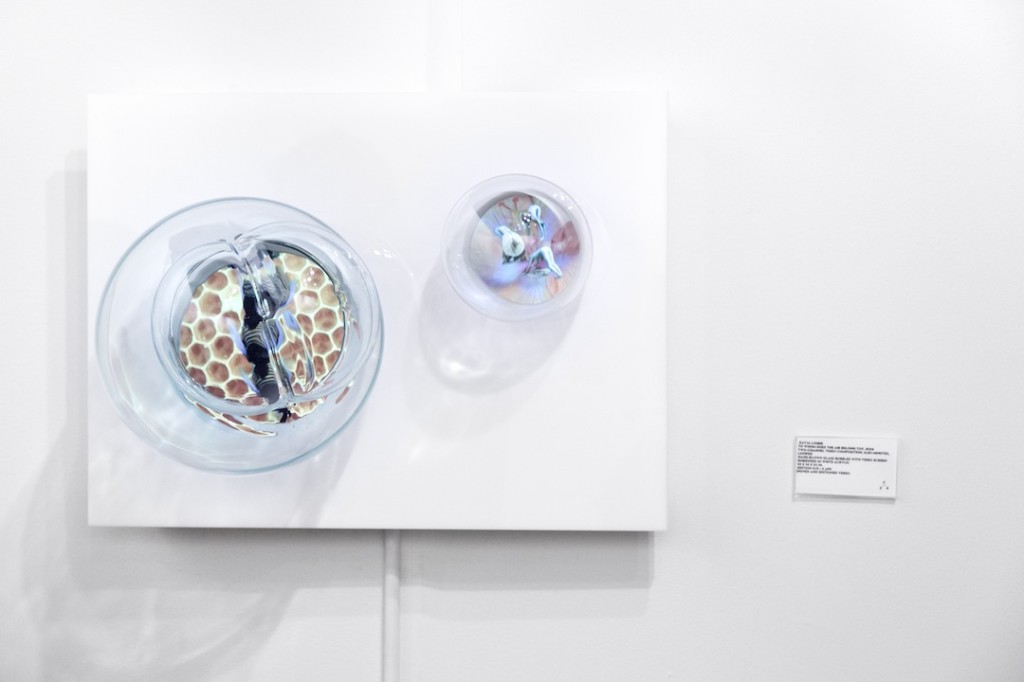
Japanese artist Saturo Tamura of the Tezukayama Gallery in Osaka works with similarly clean, simple forms, but whereas Loher uses delicate tools to tackle heavy issues, Tamura uses industrial materials to create work almost devoid of content, but with a graceful sensibility. Tamura builds kinetic sculptures with no purpose, so he says, other than to elicit our joy. In one of his Point of Contact sculptures at Volta, a wall of light bulbs blinks sporadically, powered by a wildly swinging needle-like device. Other sculptures include hearts and the Yankees symbol formed by motors, gears, and chains. These are functional materials that, in this context, are only aesthetic.
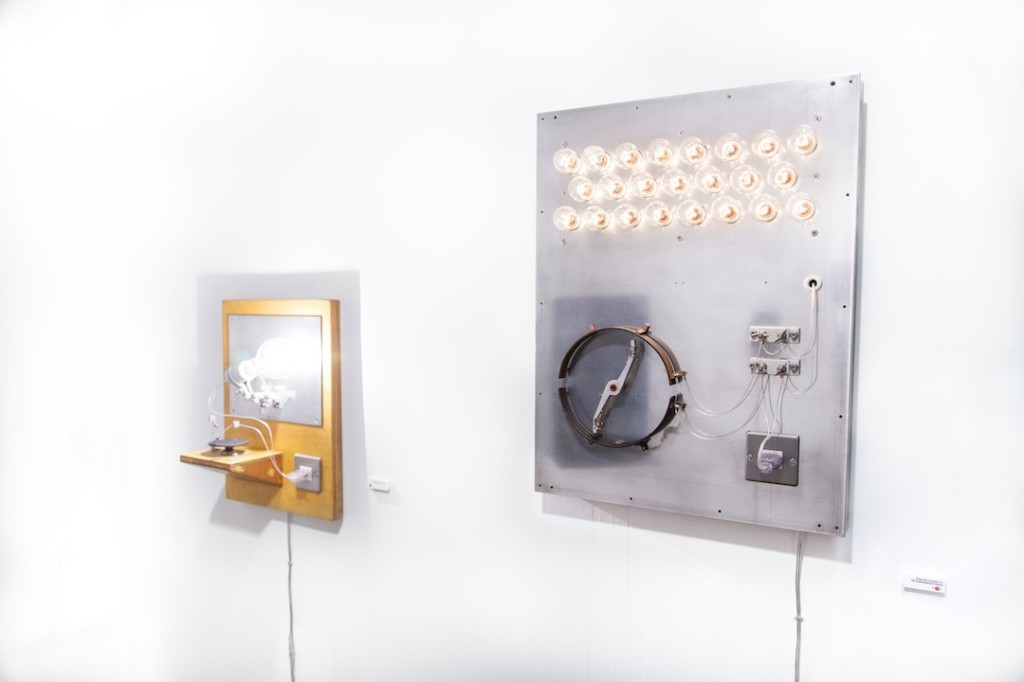
My favorite artist in this impressive array of work was Swiss artist Daniele Buetti represented by Hilgerbrotkunsthalle in Vienna. Buetti works in a variety of mediums, including light boxes, videos, sculptures, and drawings, all exploring themes of consumerism and “constructed reality.” Photos of fashion models are pierced frantically and mounted on a light box, illuminating phrases Buetti has stippled on the photos in the form of captions or speech bubbles such as “I’m too old for this.” and “Part of Creativity is Solitude?” Buetti’s most well known works were there, as well: photographs of models, this time with brand logos photoshopped into their flesh to create the appearance of disfiguring scars. In my opinion, the most interesting pieces at Buetti’s booth were framed, simplified prints of text conversations, all four of which demonstrate the failure of technology to convey human interaction. Buetti continues to be interested in the damaging and confusing effects of new media and consumer culture on our psyche.
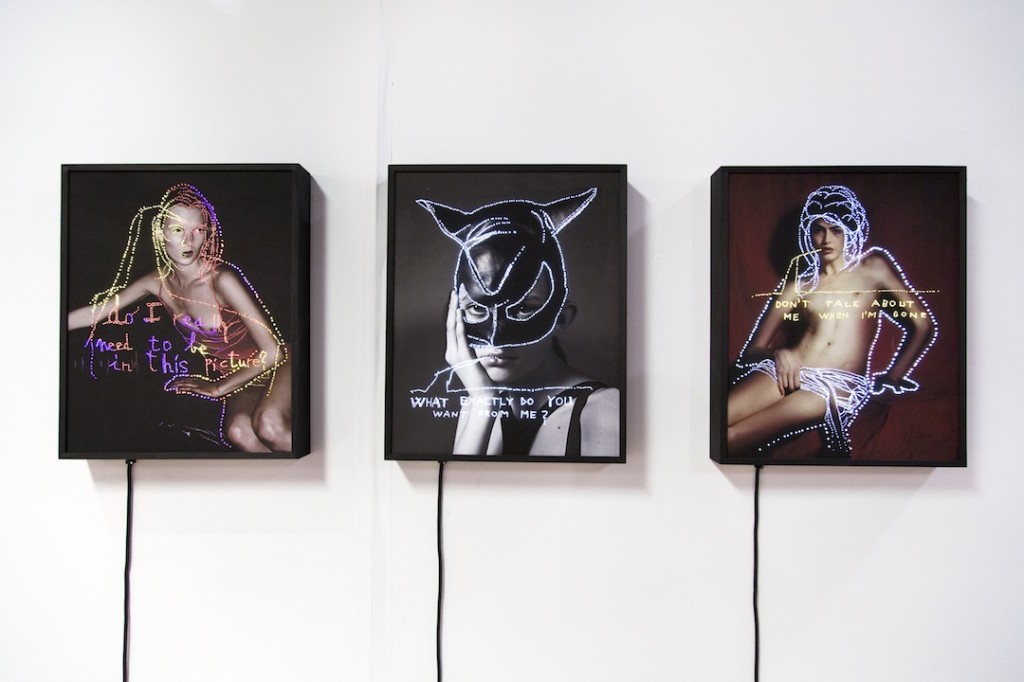
This is merely a sampling of some of the compelling work I saw at Volta. Artist Thrush Holmes uses graffiti paintings and neon lights reminiscent of Buetti’s style. And I have not even covered Ultra Violet’s new work. Ultra has been a staple of the New York art scene since the 60s, when she was heavily involved with Andy Warhol. Her new work, a series of ornate mirrors emblazoned with the words “SELFIE” and “SELF-PORTRAIT” is worth seeing. A fabric installation by Amanda Browder of the Bad At Sports Collective screams Mike Kelley. Mixed-media sculpture artists Christy Rupp and Mohau Modisakeng are both utilizing the languages of anthropology and biology; one in regards to the legacy of racism in South Africa, the other the destruction of our natural resources by corporate culture. London-based artist Pius Fox’s simple, monochromatic paintings continue the conversation Robert Ryman started in 1955. Indeed, all the works I admired engaged with the larger dialogue of history and art making.
